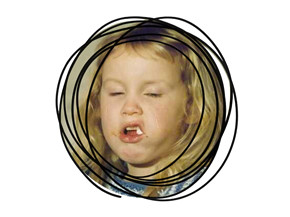For the third stop on our Tunisian road trip, we headed towards the archaeological site of Carthage. Another UNESCO World Heritage Site, Carthage has an extensive, tumultuous and not-always-clear history with a number of different stories surrounding its foundation. Built on the eastern side of Lake Tunis, overlooking the Mediterranean Sea, it was a place of great influence, fought over, destroyed and rebuilt by numerous powers. At various points throughout history it became both one of the most important cities in the Roman Empire and the capital of the Vandal Kingdom, before it was destroyed for a final time during the Islamic conquest. I must confess, though, that my historical knowledge is so "good" that when someone told me Carthage was destroyed by the Vandals I thought.. well, you can guess what I thought.
These days, the Carthaginian ruins are scattered across a hand-full of sites and it was here that having a private car took on a usefulness all of its own. Our driver was able to guide us towards the sites he thought to be of most interest, but drove us past the others long enough that we could decide whether or not to get out and see. We stopped off at Byrsa Hill and the Antonine Baths, with a quick visit to the Carthage National Museum (which was a bit of a disappointment after the Bardo Museum), and really enjoyed soaking up our last rays of African sunshine while surrounded by such history.
After a while, though, one ruin begins to look much the same as the next to the untrained eye and so we hopped back in the car and headed off on the hunt for lunch.
Our hungry bellies led us in the direction of Sidi Bou Said, the last stop on our road trip, where we had our first and only adventure in traditional Tunisian cuisine (which I wrote about previously) before setting off to explore the rest of the village.
A small dwelling on the Northern coast of Tunisia, about 20km from Tunis, Sidi Bou Said is known as "the blue and white village" for reasons that are instantly apparent on arrival and the similarity to our own Scottish "Blue Toon" did amuse me, though comparisons could be drawn in name alone.
Although a hive of tourist activity, there was something very quaint and peaceful about our walk through Sidi Bou Said
which led us up a cobbled hill lined by traditionally-built Tunisian
homes, some of which were open for public viewing. Everywhere I looked in Sidi Bou Said seemed to glow in the afternoon sun and there were beautiful sights in every direction, but it was the view from the top of the hill that made me fall in love with this tiny village and set it apart from the rest of Tunisia for me.
Standing at the top of that hill on a dirty, unpathed patch of ground away from the road, the view took my breath away. From the marina directly below us, to the sites of Carthage in the South, to the crystal blue waters of the Gulf of Tunis, to the mountains way over on the other side, it was beautiful sight after beautiful sight and it became my favourite part of not only this road-trip, but of our entire time in Tunisia.
My pictures don't do it any justice, but I could gladly have stood there snapping away forever..
We didn't, however, as before long it was time to meander back down that blue and white hill, admire the cute little mosque at the bottom, hop back in the car a final time and head back along the motorway to Hammamet feeling suitably delighted with our road-tripping adventure!
The moral of the story? If you ever find yourself in Tunisia, you must visit Sidi Bou Said.. and you should probably do it in your own private hire car.















0 Comments